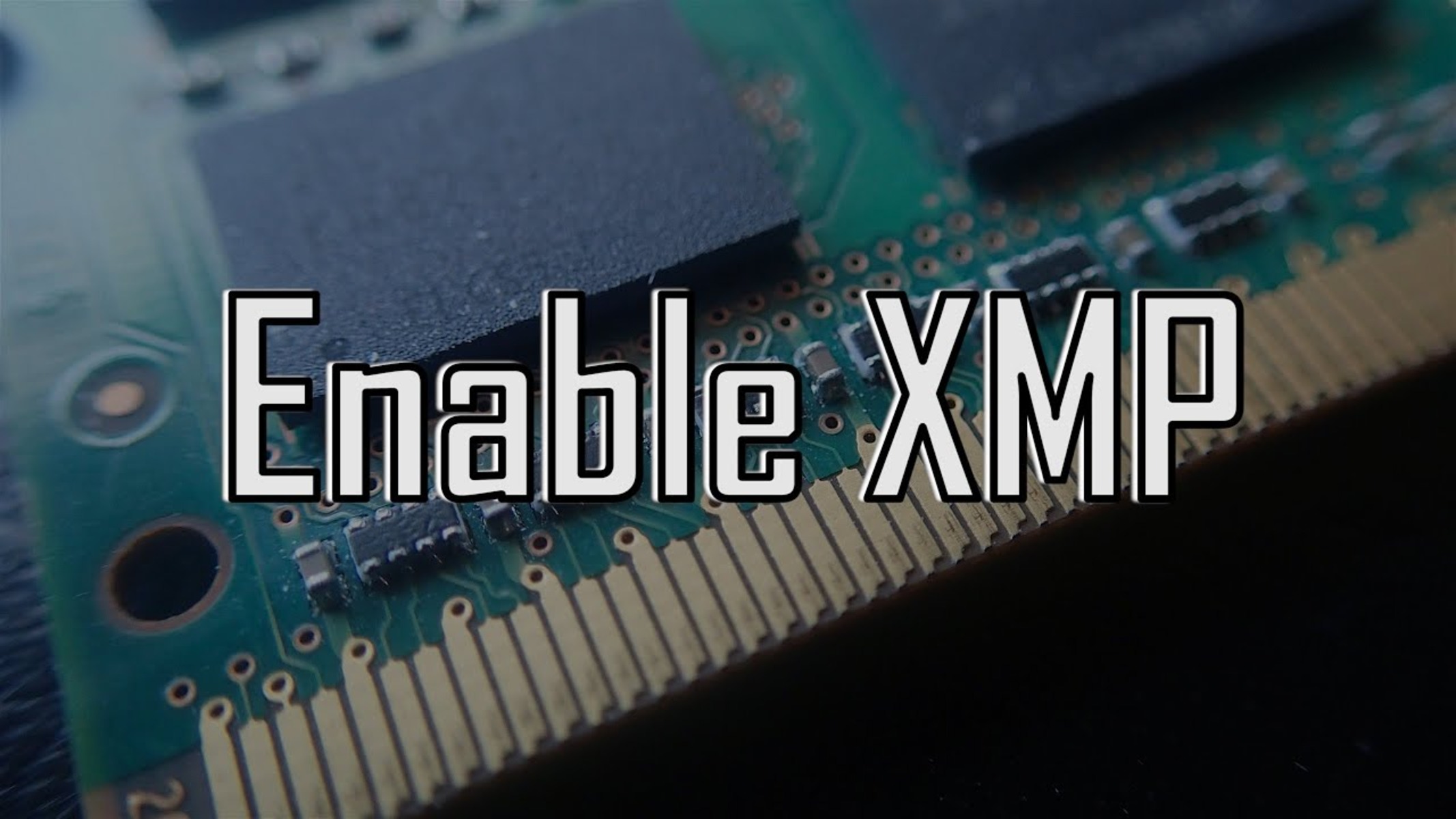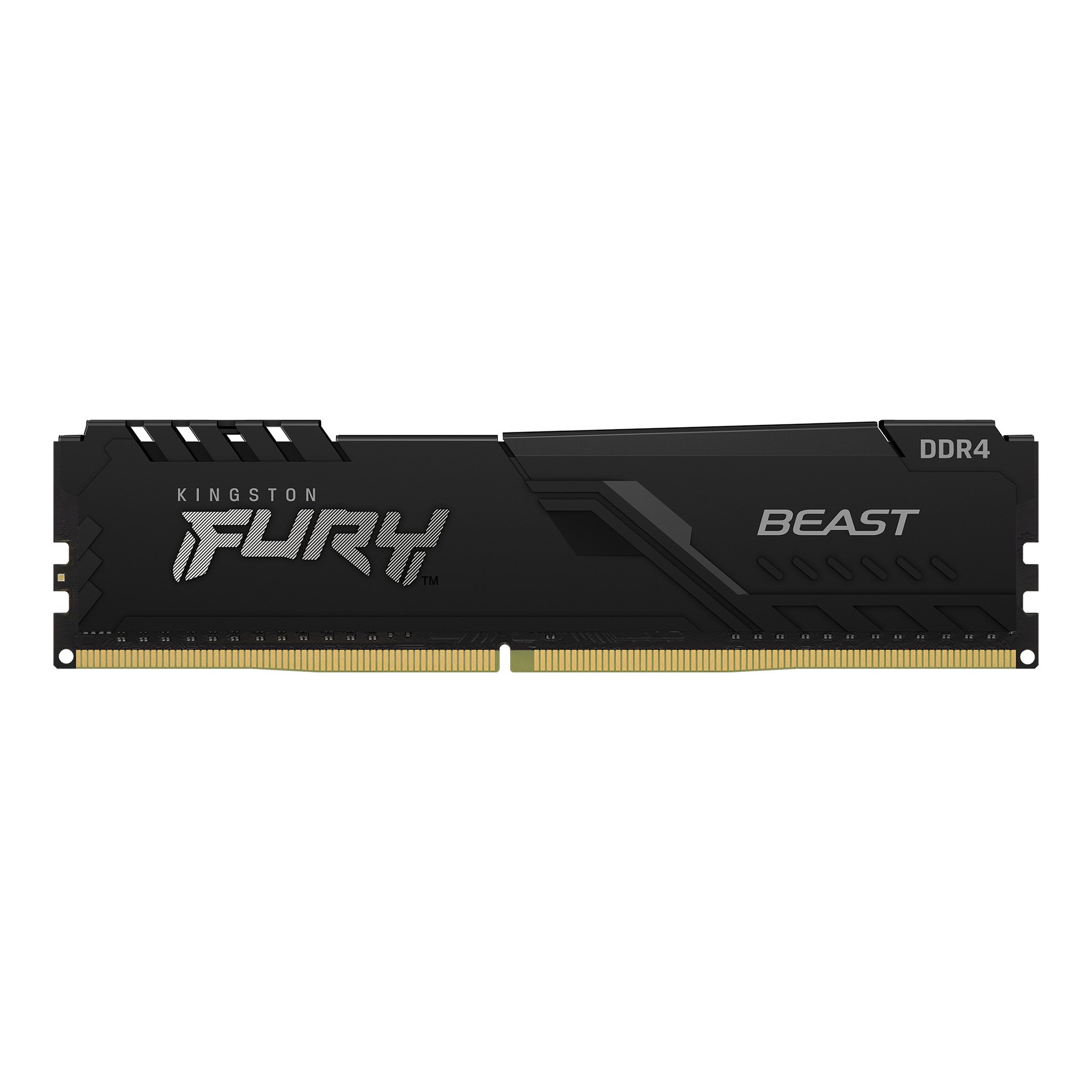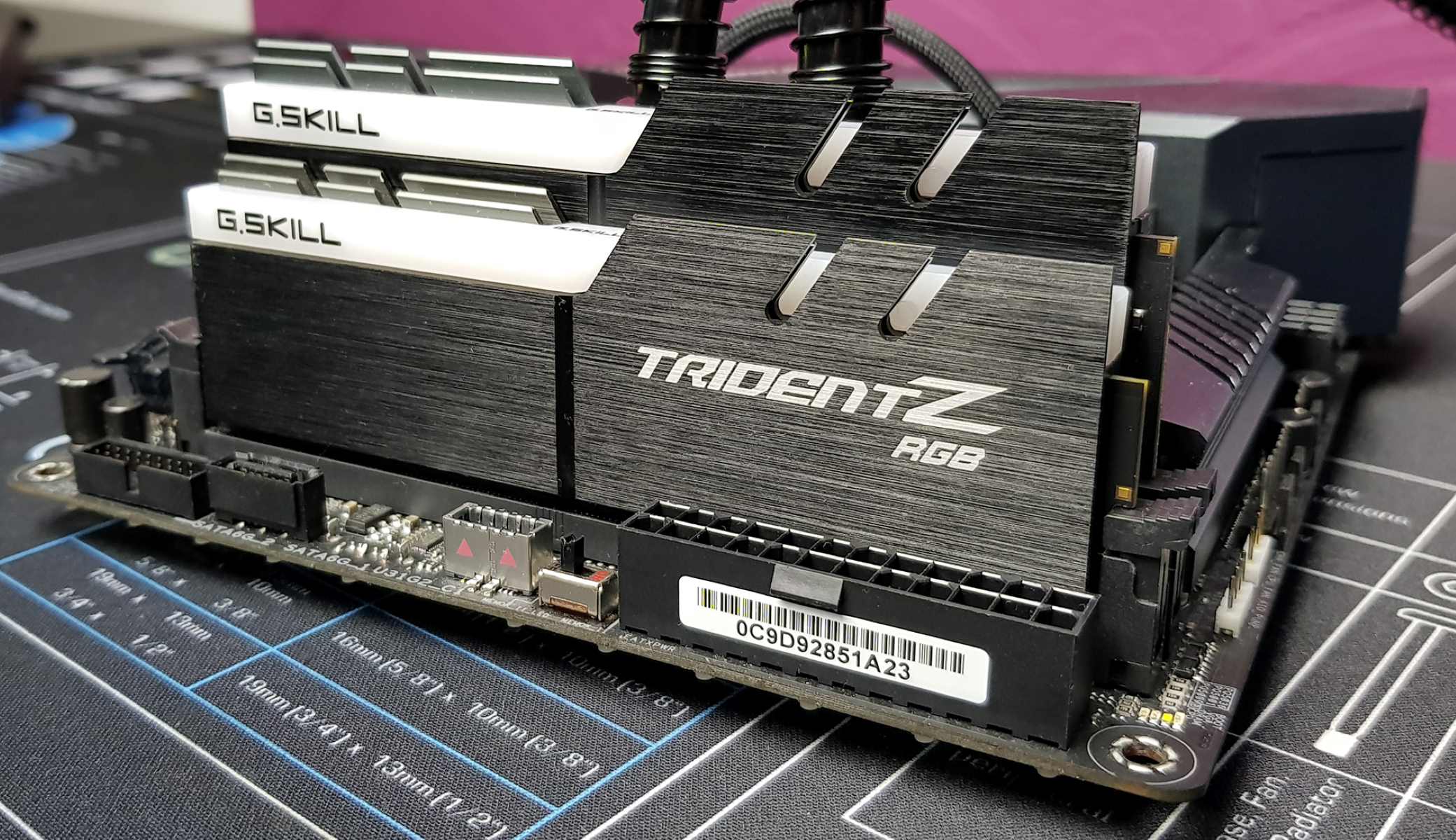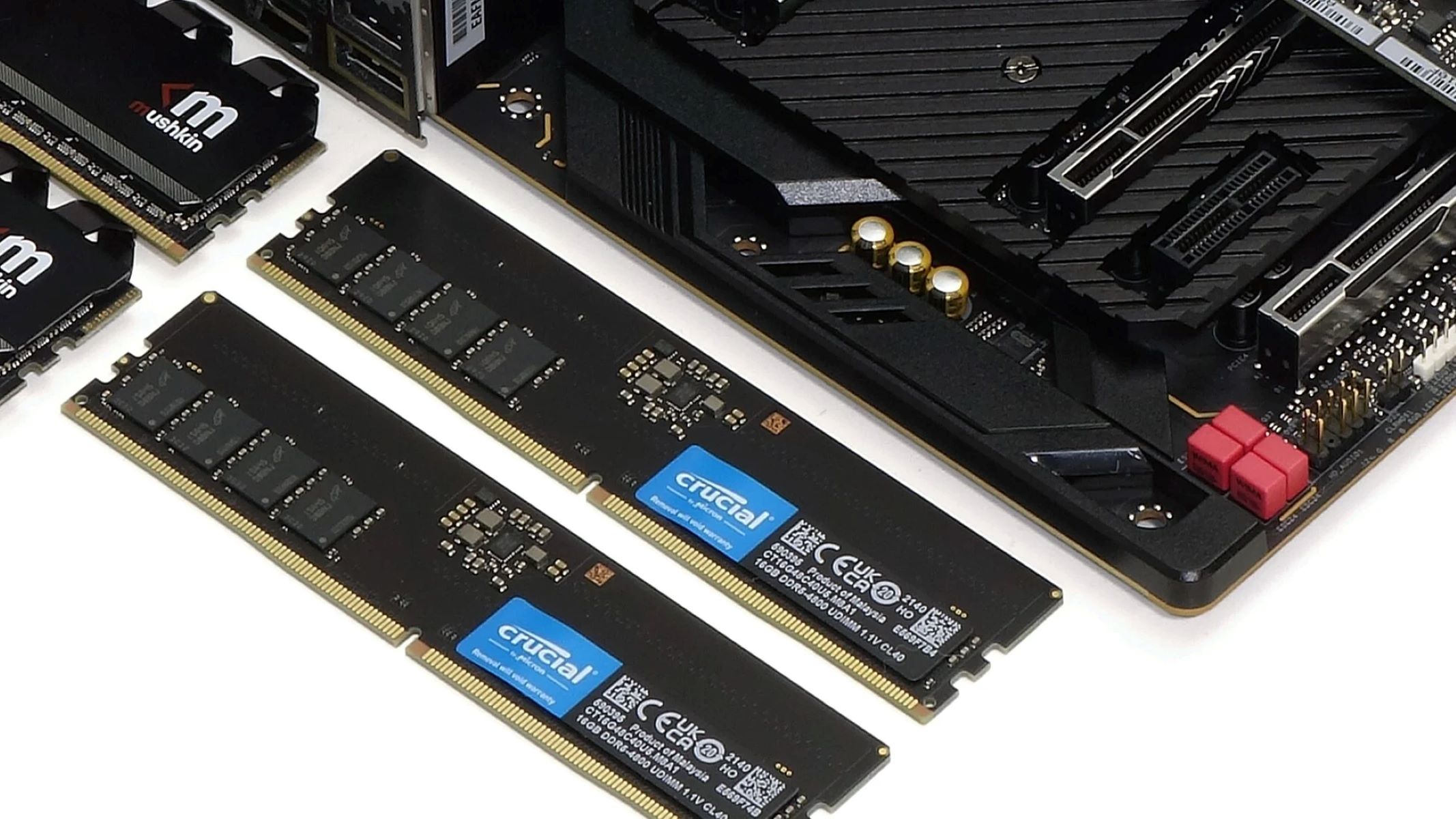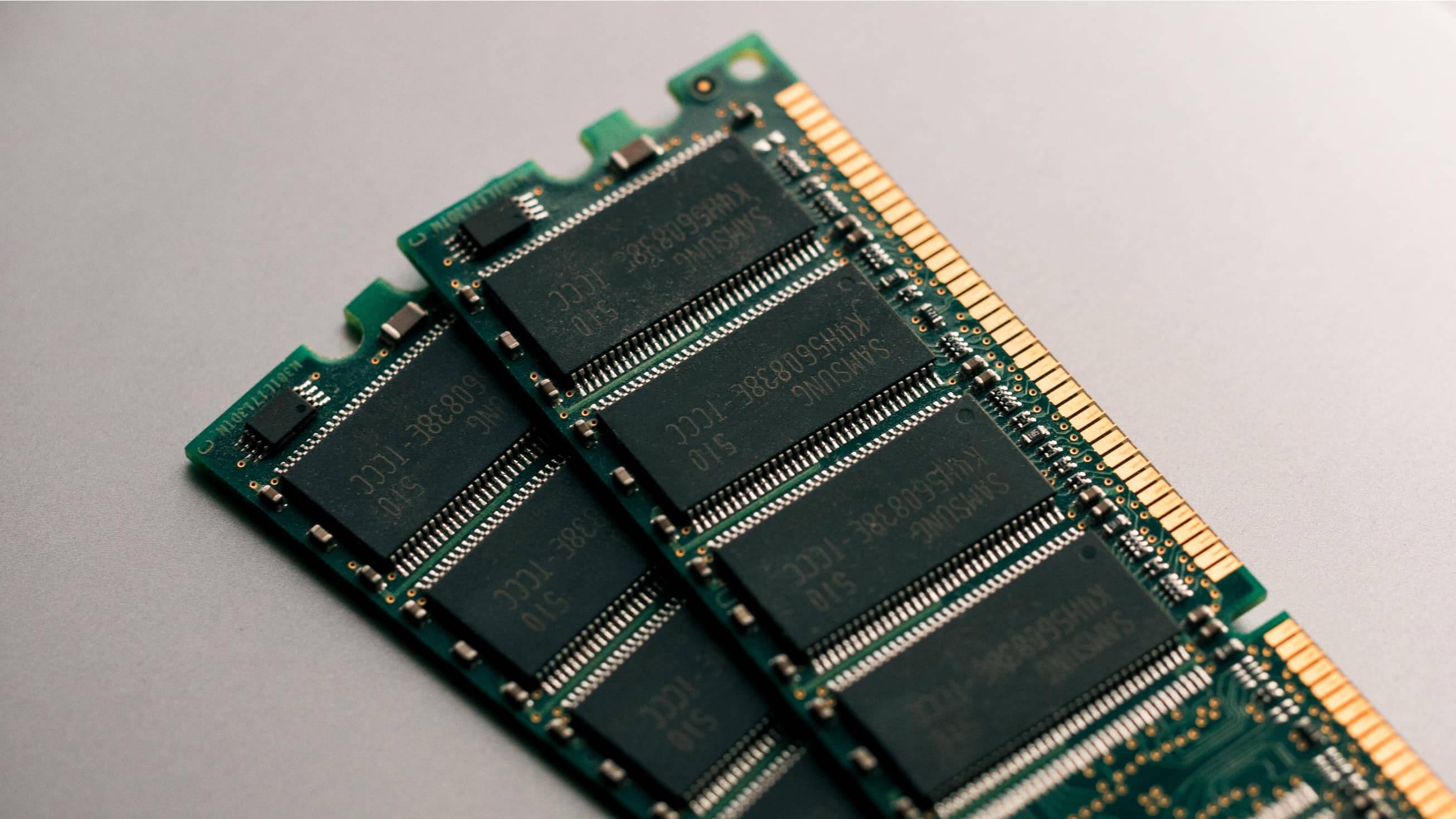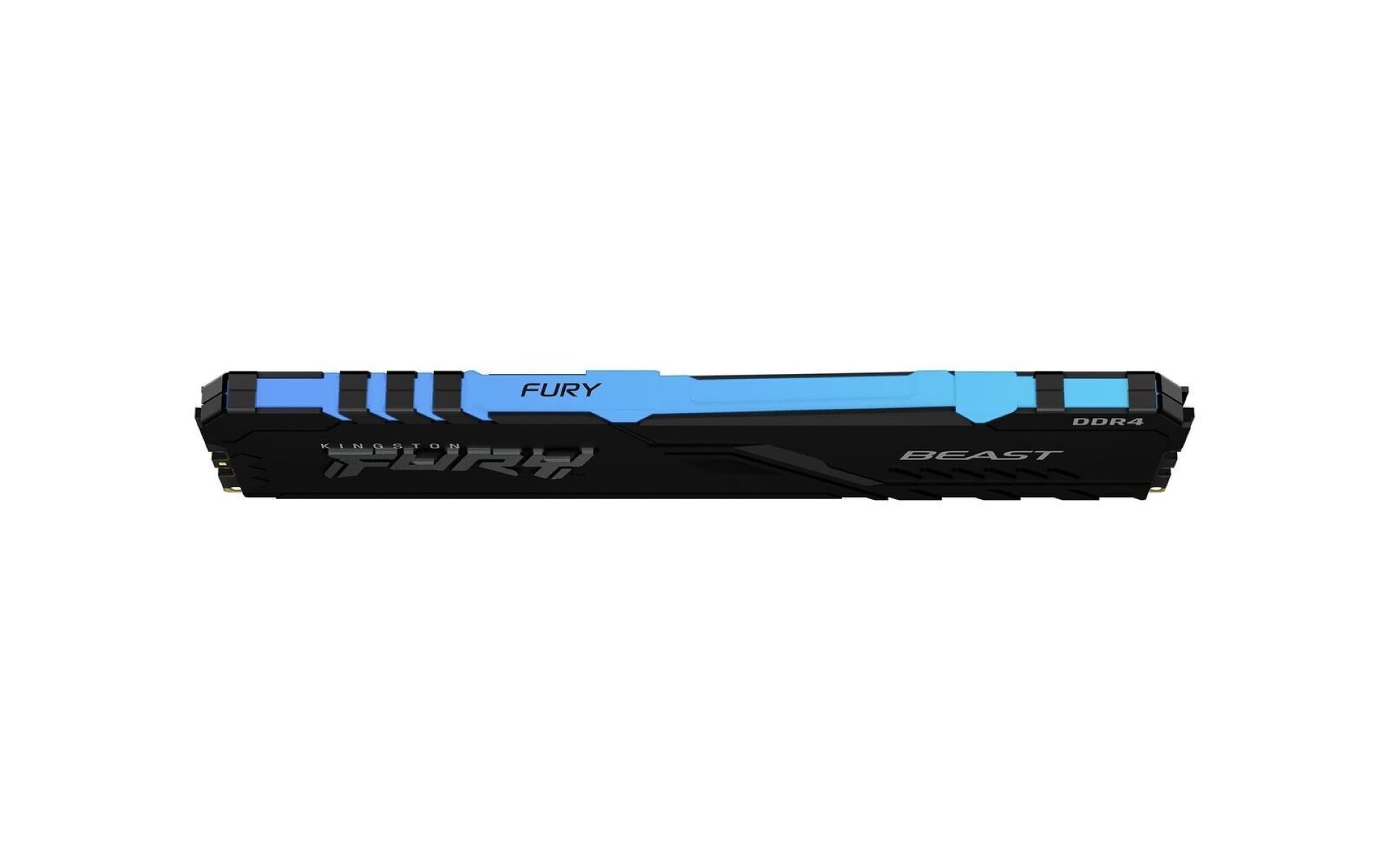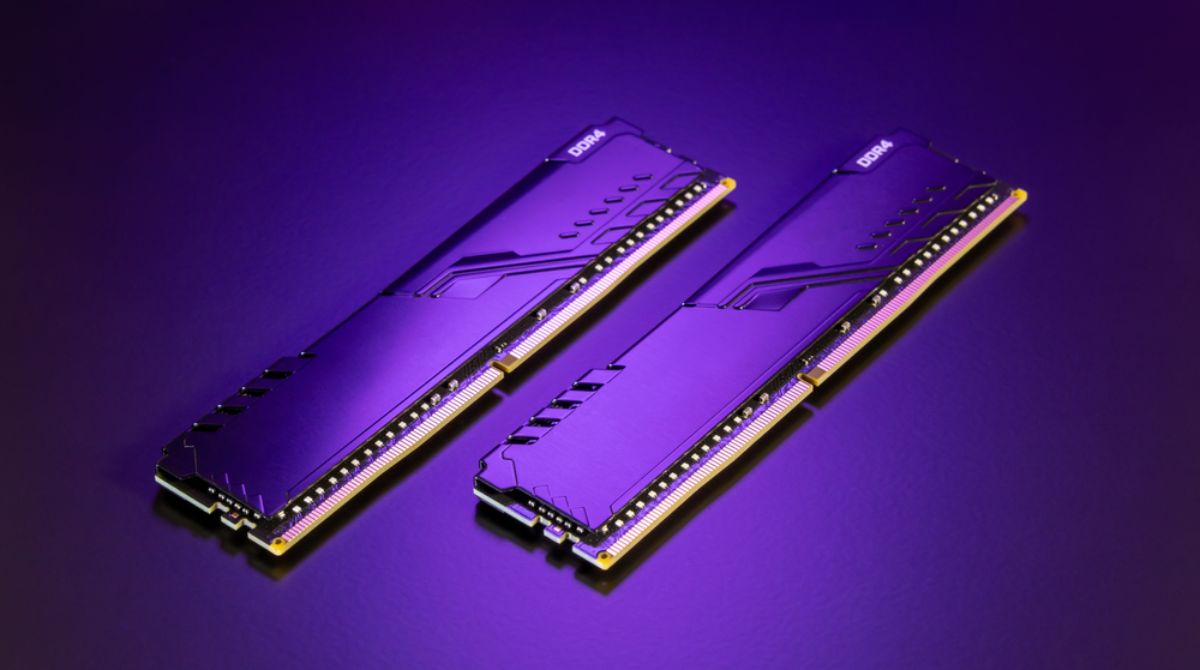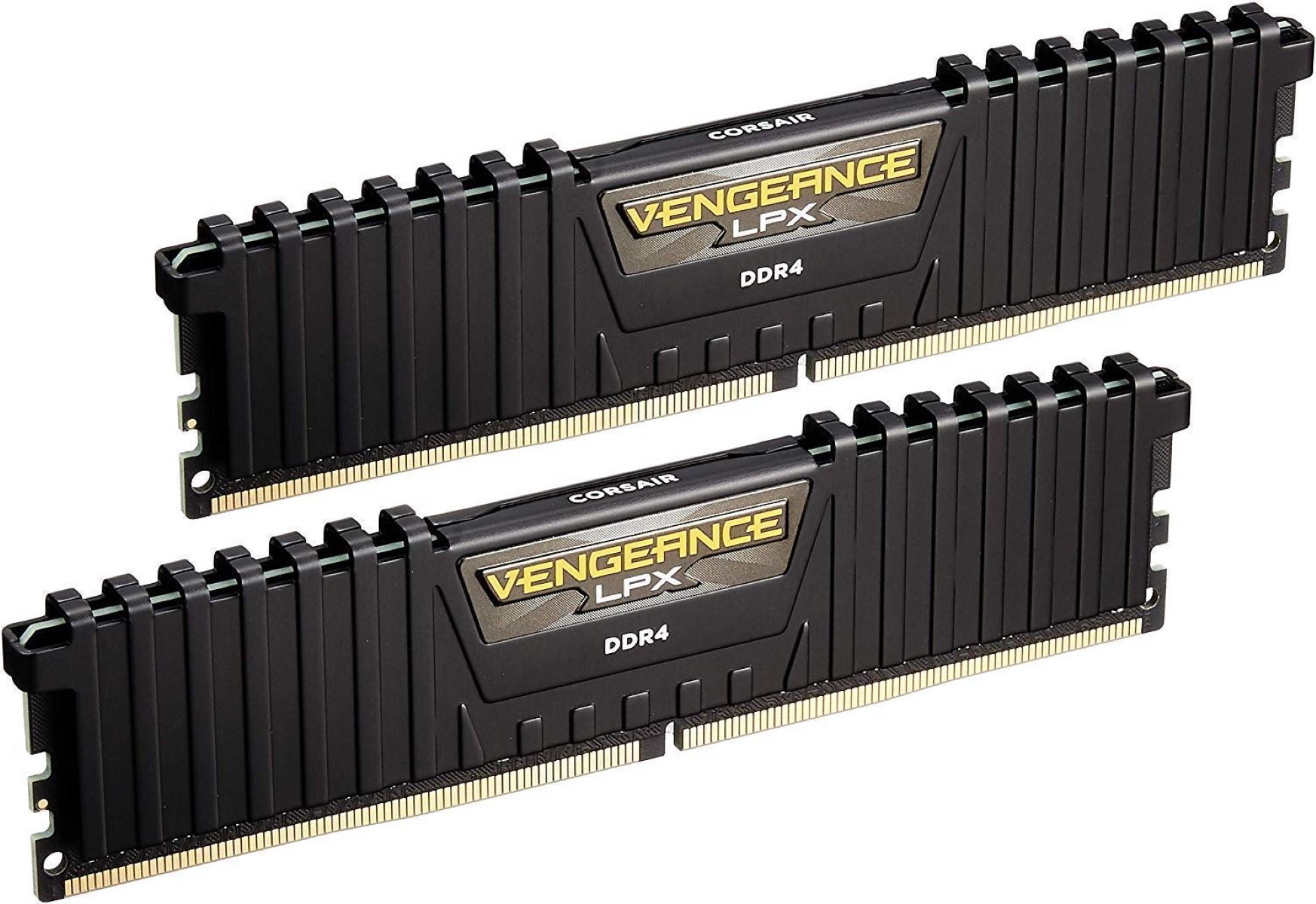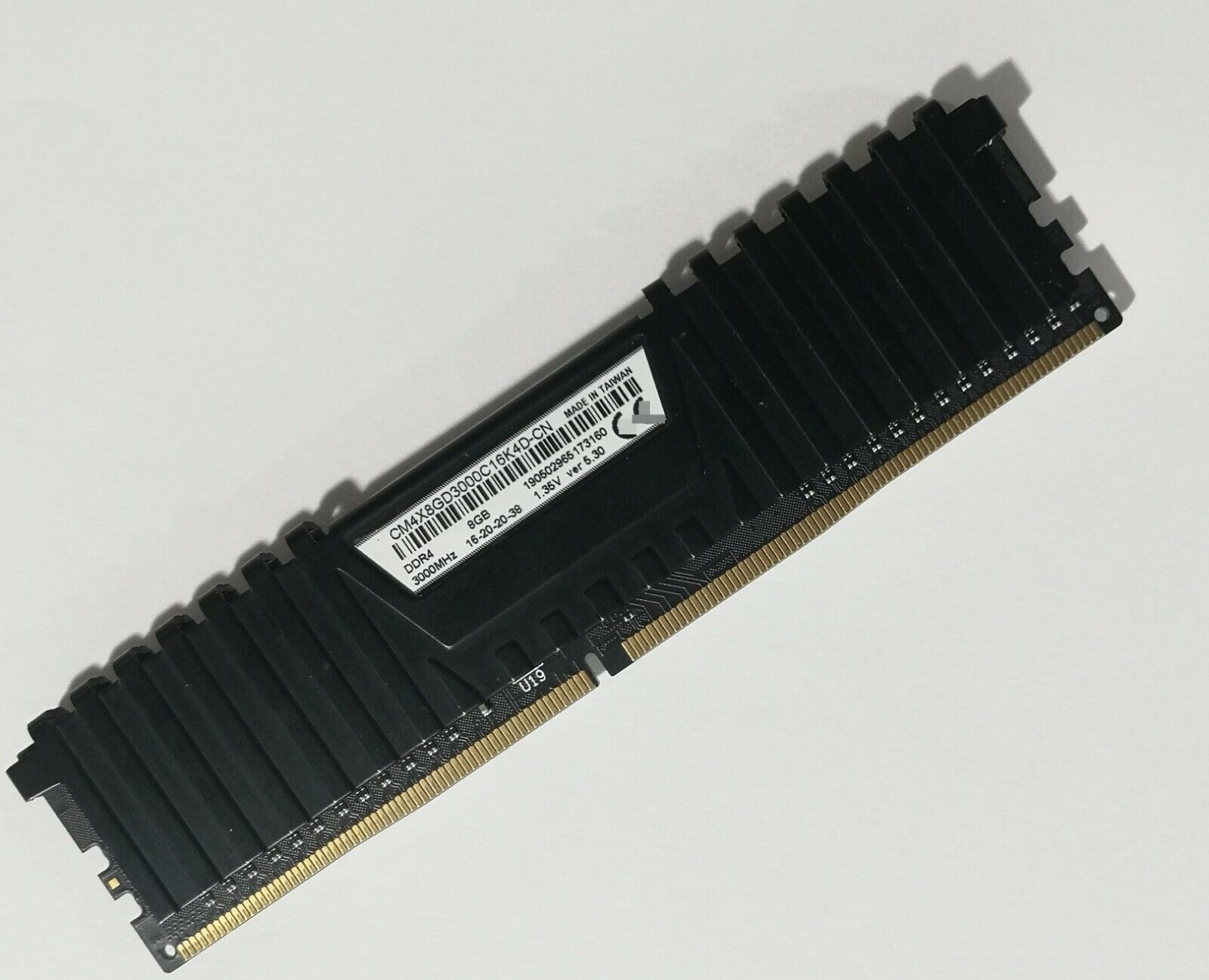Introduction
RAM XMP, also known as eXtreme Memory Profile, is a powerful feature in modern computer systems that allows users to optimize the performance of their RAM (Random Access Memory). With RAM being a crucial component of a computer’s hardware, it plays a vital role in determining the overall speed and responsiveness of the system.
RAM XMP provides an easy and efficient way to overclock your RAM modules, enabling them to operate at higher frequencies and with lower latency. This results in enhanced performance and faster data transfer rates, making it particularly beneficial for gamers, content creators, and anyone who requires demanding computational tasks.
By enabling RAM XMP, users can effectively unleash the full potential of their RAM, maximizing the available system resources and improving overall system performance. In this article, we will delve into the inner workings of RAM XMP, explore its benefits and limitations, and provide guidance on how to enable it on your system.
What is RAM XMP?
RAM XMP, or eXtreme Memory Profile, is a feature that allows users to optimize the performance of their RAM modules. It is a standard developed by Intel that enables users to easily and safely overclock their RAM, pushing it beyond its default specifications to achieve higher speeds and lower latency.
RAM XMP is specifically designed for users who want to take full advantage of their high-performance RAM modules and enhance their system’s overall performance. It provides a pre-programmed profile that contains specific settings for voltage, frequency, and timings, which can be applied to the RAM modules with a simple adjustment in the computer’s BIOS settings.
By enabling RAM XMP, users can significantly increase the frequency at which their RAM operates, which in turn improves the speed at which data is transferred between the RAM and the CPU. This increase in speed can result in faster application load times, smoother multitasking, and improved overall system responsiveness.
It’s important to note that not all RAM modules are compatible with RAM XMP. This feature is typically found in high-performance RAM modules and is commonly used by gamers, overclockers, and enthusiasts who require maximum performance from their systems. It’s always recommended to check the compatibility of your RAM modules with the specific XMP profile before enabling it.
RAM XMP offers users a straightforward and hassle-free way to enhance their system’s performance without requiring extensive knowledge of manual overclocking. It eliminates the need for users to manually tweak individual RAM settings, as the XMP profile takes care of all the necessary adjustments automatically.
In the next section, we will dive deeper into how RAM XMP actually works and explore the benefits it offers to users.
How does RAM XMP work?
RAM XMP works by providing users with pre-configured profiles that contain optimized settings for their RAM modules. These profiles are stored on the RAM module itself or within the computer’s BIOS, and they can be easily accessed and enabled through the BIOS settings.
When a user enables a RAM XMP profile, the BIOS adjusts the frequency, voltage, and timings of the RAM to match the settings specified in the profile. This effectively overclocks the RAM, allowing it to operate at higher speeds and with lower latency than the default specifications.
The XMP profile communicates with the computer’s memory controller, informing it about the optimized settings for the RAM modules. The memory controller then adjusts its parameters accordingly to ensure proper communication and synchronization between the RAM and the CPU.
RAM XMP profiles typically offer several different options, each representing a different level of performance enhancement. Users can choose the profile that best suits their requirements and hardware capabilities.
One important consideration when using RAM XMP is the compatibility between the RAM modules and the motherboard. Not all motherboards fully support all XMP profiles, and sometimes certain profiles may not work as expected. It’s crucial to consult the motherboard’s manual or manufacturer’s website to confirm that the selected XMP profile is compatible with your specific motherboard model.
It’s worth noting that enabling RAM XMP may result in increased power consumption and heat generation. The voltage adjustments required for higher RAM frequencies can lead to increased power consumption, which may cause the system to run hotter and potentially require better cooling solutions.
By using RAM XMP, users can harness the potential of their high-performance RAM modules and achieve faster data transfer rates and improved system performance. In the following section, we will explore the benefits of using RAM XMP.
Benefits of using RAM XMP
Enabling RAM XMP offers several benefits that can greatly enhance system performance and user experience. Here are some of the key advantages of using RAM XMP:
- Increased Performance: RAM XMP allows users to overclock their RAM modules, resulting in higher frequencies and lower latency. This increase in performance translates into faster data transfer rates, quicker application load times, and smoother multitasking capabilities. Gamers, content creators, and professionals who work with resource-intensive applications can benefit greatly from the improved performance offered by RAM XMP.
- Effortless Optimization: RAM XMP profiles come pre-configured with optimized settings for specific RAM modules. Users can simply select the appropriate XMP profile in the BIOS settings, eliminating the need for manual adjustments of various RAM parameters. This makes it easy for users to optimize their RAM for maximum performance without delving into complex overclocking settings.
- Compatibility and Stability: RAM XMP profiles are rigorously tested and verified by RAM manufacturers. This ensures that the specified settings are stable and compatible with the respective RAM modules. By using XMP profiles, users can achieve optimal performance without compromising the stability and reliability of their system.
- User-Friendly: Enabling RAM XMP does not require extensive technical knowledge or expertise. Most modern BIOS interfaces provide a straightforward and intuitive way to enable XMP profiles. Users can easily navigate the BIOS settings and make the necessary adjustments with a few simple clicks.
- Improved Gaming Experience: Gamers can benefit significantly from RAM XMP, as it allows for smoother gameplay, reduced loading times, and improved responsiveness. The increased memory bandwidth and lower latency provided by XMP can help deliver a more immersive and fluid gaming experience.
These are just a few of the advantages of using RAM XMP. However, it’s important to note that the benefits may vary depending on the specific hardware configuration and the demands of the applications being used. In the next section, we will explore some of the limitations and considerations when using RAM XMP.
Limitations of RAM XMP
While RAM XMP offers significant performance benefits, there are some limitations and considerations that users should be aware of. Here are a few key limitations of using RAM XMP:
- Compatibility: Not all RAM modules and motherboards fully support all XMP profiles. It’s essential to ensure compatibility between the RAM modules, the motherboard, and the specific XMP profile being used. The motherboard’s manual or manufacturer’s website should provide information on supported XMP profiles.
- Heat and Power Consumption: Enabling RAM XMP can result in increased power consumption and heat generation. Higher RAM frequencies require additional voltage, which can lead to increased power consumption and potentially generate more heat. Users may need to consider proper cooling solutions to maintain system stability and avoid overheating issues.
- System Stability: Overclocking RAM modules by enabling XMP profiles may compromise system stability if the components are not properly cooled or if the settings are pushed beyond their limits. Users should monitor the system’s temperature and stability after enabling XMP and make adjustments if necessary.
- Data Loss and Corruption: In rare cases, enabling XMP profiles may cause data loss or corruption. This is more likely to occur if the RAM modules or system components are not of high quality or if the XMP settings are too aggressive. It is recommended to back up important data and verify system stability after enabling XMP.
- Warranty and Support: Overclocking RAM through XMP may void the warranty provided by the RAM manufacturer. It’s important to check the terms and conditions of the warranty to understand the implications of using XMP. Additionally, technical support for RAM issues may be limited or unavailable if the RAM has been overclocked through XMP.
Despite these limitations, many users find that the benefits of using RAM XMP outweigh the potential drawbacks. Understanding these limitations and taking necessary precautions can help ensure a safe and stable overclocking experience.
Next, we will discuss how to enable RAM XMP on your system and provide troubleshooting tips for common issues.
How to Enable RAM XMP
Enabling RAM XMP is a straightforward process that can be done through the BIOS settings of your computer. Here are the general steps to enable RAM XMP:
- Access BIOS Settings: Restart your computer and enter the BIOS settings by pressing a specific key during the boot process. The key to access the BIOS varies depending on your motherboard manufacturer. Common keys include Del, F2, F10, or Esc. Refer to your motherboard’s manual or manufacturer’s website for the exact key.
- Navigate to Memory Settings: Once in the BIOS settings, navigate to the section that contains memory settings. The exact name and location of this section may vary depending on the motherboard model. Look for options related to memory, RAM, or overclocking.
- Select XMP Profile: In the memory settings, you should find an option to enable XMP or select XMP profile. Depending on your BIOS interface, you may see a dropdown menu or a list of available XMP profiles. Choose the XMP profile that matches the specifications of your RAM modules. If you have multiple XMP profiles available, select the one that suits your performance requirements.
- Save and Exit: After selecting the XMP profile, save the changes and exit the BIOS settings. This will prompt the computer to restart with the applied XMP settings.
It’s important to note that the exact steps and options may vary depending on your motherboard manufacturer and BIOS version. Consult your motherboard’s manual or the manufacturer’s website for detailed instructions specific to your system.
Once you have enabled RAM XMP, it’s recommended to monitor your system’s stability and temperature. If you encounter any issues, such as system crashes or overheating, you may need to adjust the XMP settings or consider additional cooling measures.
In the next section, we will provide troubleshooting tips for common issues that users may encounter when enabling RAM XMP.
Common Issues and Troubleshooting Tips
While enabling RAM XMP can offer significant performance gains, it is not uncommon to encounter issues during the process. Here are some common issues users may face when enabling RAM XMP and troubleshooting tips to resolve them:
- System Instability: One common issue when enabling XMP is system instability, which can manifest as crashes, blue screens of death (BSOD), or unresponsive behavior. If you experience system instability after enabling XMP, try resetting the BIOS settings to default. This will revert all settings, including XMP, to their original values. If the instability persists, consider adjusting the XMP profile or reaching out to the motherboard manufacturer for support.
- Memory Compatibility: Not all RAM modules are fully compatible with XMP profiles, especially if they are of older or lower quality. If you encounter compatibility issues, try updating your motherboard’s BIOS firmware to the latest version. Sometimes, updated firmware can provide better XMP compatibility. If the issue persists, you may need to consider using a different RAM module that is known to be compatible with XMP profiles.
- Temperature and Heat: Enabling XMP can increase power consumption and generate more heat. If you notice that your system’s temperature is higher than usual after enabling XMP, make sure that your cooling system is adequate. Consider adding additional fans or upgrading your CPU cooler to maintain proper temperature levels and prevent overheating-related issues.
- RAM Frequency Not Detected: In some cases, the system may fail to detect the correct frequency of the RAM modules, resulting in them running at lower speeds than expected. To troubleshoot this issue, ensure that you have properly enabled the XMP profile and that it corresponds to the correct frequency of your RAM modules. Additionally, check for any BIOS updates available that may improve compatibility and detection of the RAM frequency.
- Voltage Adjustments: Some XMP profiles may require higher voltage settings for the RAM modules to operate optimally. If your system encounters stability issues after enabling XMP, you can try manually adjusting the RAM voltage within safe limits. However, exercise caution when making voltage adjustments, as excessive voltage can cause damage. It’s recommended to consult your motherboard’s manual or seek guidance from professionals if you are unsure about voltage adjustments.
If you encounter any other issues or have difficulty troubleshooting the problems with enabling RAM XMP, it’s advisable to consult the manufacturer’s support resources or community forums for specific guidance concerning your motherboard and RAM modules.
With proper troubleshooting and adjustments, many users can successfully enable RAM XMP and enjoy the improved performance it brings to their computer systems.
Conclusion
RAM XMP, or eXtreme Memory Profile, provides users with a convenient and effective way to optimize the performance of their RAM modules. By enabling XMP, users can overclock their RAM, achieving higher frequencies and lower latency for enhanced system performance.
In this article, we explored what RAM XMP is, how it works, and the benefits it offers. We discussed the increased performance, effortless optimization, compatibility, user-friendliness, and improved gaming experience that come with enabling RAM XMP. However, we also discussed some of the limitations and considerations, including compatibility issues, heat generation, system stability, and potential data loss or corruption.
We also provided step-by-step instructions on how to enable RAM XMP through the BIOS settings and offered troubleshooting tips for common issues that users may encounter during the process.
Ultimately, RAM XMP can be a valuable tool for users who want to maximize the performance of their high-performance RAM modules. It allows for easy optimization, improved computer responsiveness, and a better overall user experience, particularly for gamers, content creators, and individuals who require demanding computational tasks.
Before enabling RAM XMP, it’s important to ensure compatibility between the RAM modules, the motherboard, and the specific XMP profile. Users should also be aware of the potential increase in power consumption, heat generation, and the need for adequate cooling solutions.
By understanding the benefits, limitations, and proper procedures for enabling RAM XMP, users can make informed decisions and effectively optimize their system’s performance.







